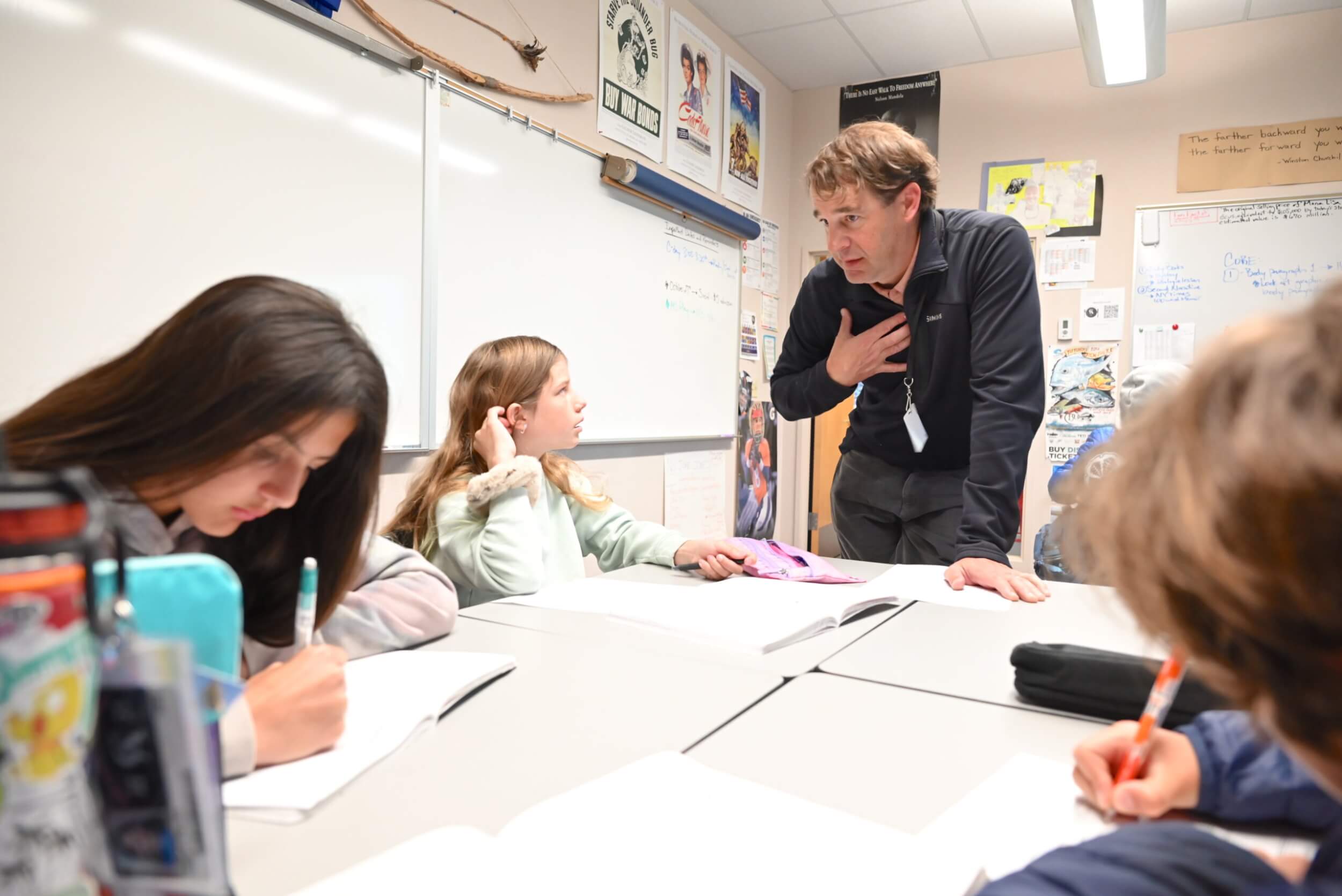For more than 25 years, Colorado Academy’s Sixth Grade Core program has helped students feel safe, seen, and successful. An academic and social-emotional cushion that affords children a “soft landing” on their arrival in the Middle School, Core integrates language arts, social studies, and Advisory in a unique, extended classroom experience designed to bridge the gap between an elementary homeroom environment and the discipline-based schedule that prevails beginning in Seventh Grade at CA.
Spending almost half the school day with the same group of peers and a single teacher, students find support and connection through Core while honing essential writing and reading skills, building trust with their classmates, investigating major themes such as identity in their personal lives and community, focusing on topics such as healthy relationships and digital citizenship, and learning to see media such as novels, news articles, videos, and poems within their historic and cultural contexts.
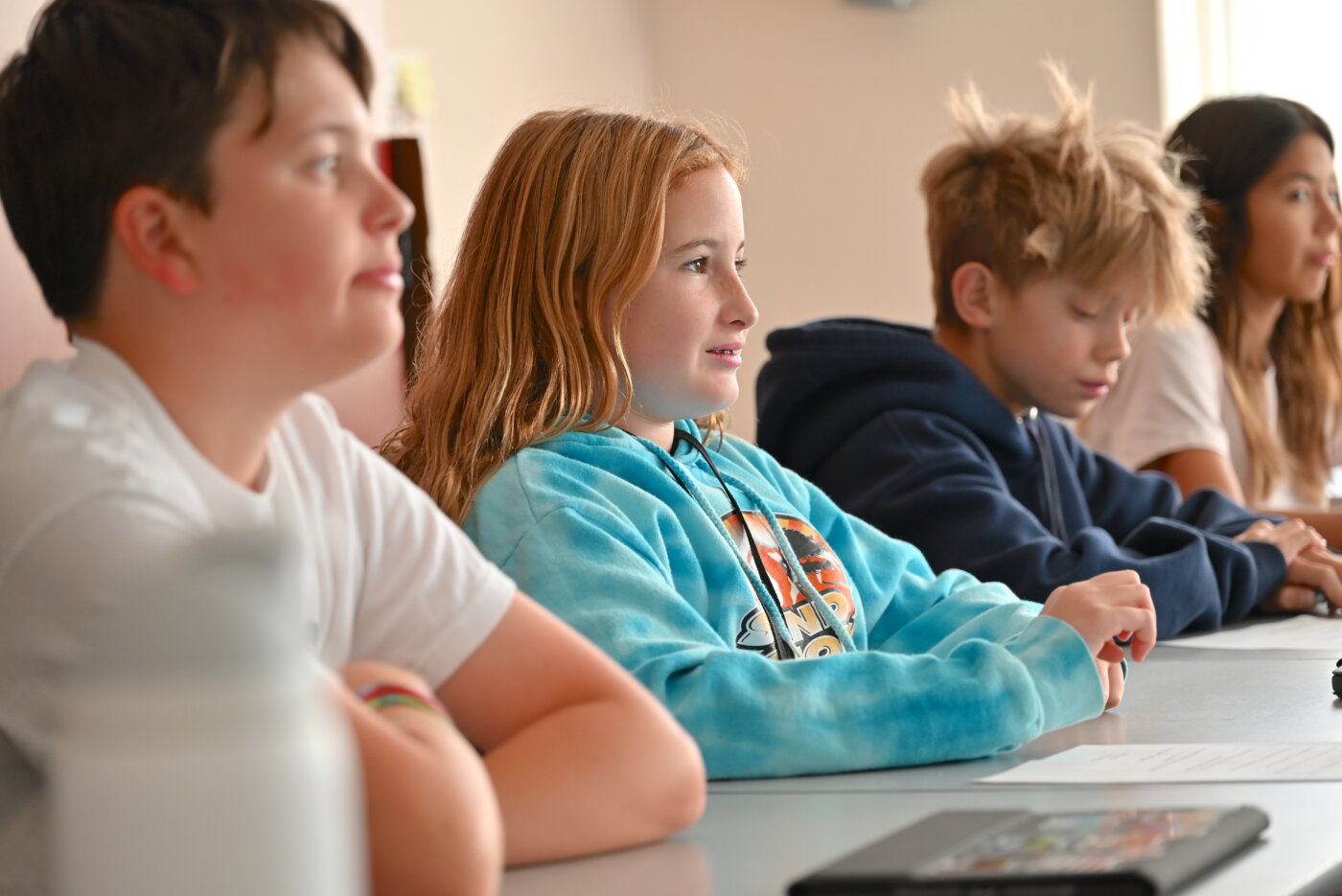
“The Core program is a luxury,” says veteran Middle School English and Core teacher Peggy Butler, who’s seen it working since she arrived at CA in 1990. “The extra time and space with the kids mean we don’t have to race through the academics. We can all take a breath and get to know each other.”
“Sixth Grade is really at the crux of everything,” adds Liz Estacio, Middle School learning specialist and Core teacher. “They’ve outgrown the homeroom, and yet they’re still too young to dive right into the intense academic schedule that starts later on. Core is the ideal middle ground—they have time to grow up a little bit, learn to navigate their day, and still come back to the room when they feel stressed out and think, ‘It’s okay; I’ve got this.’”
Exploring history, one story at a time
More than a place to call their own, Core promises students a solid jumping-off point for exploring interdisciplinary questions through thematic units that tie historic moments and forces—colonialism, global migration, World War II—to literature, the arts, and the students’ own experiences.
According to English and social studies Core teacher Matt Olmstead ’95, themes and materials are intentionally chosen for the way they resonate with Sixth Graders. For example, he explains, “The characters in the books we read are about the same age they are. So even though they may be from another country or another period of time, they’re still going through some of the same things. There’s an interconnectivity we want them to see in the world.”
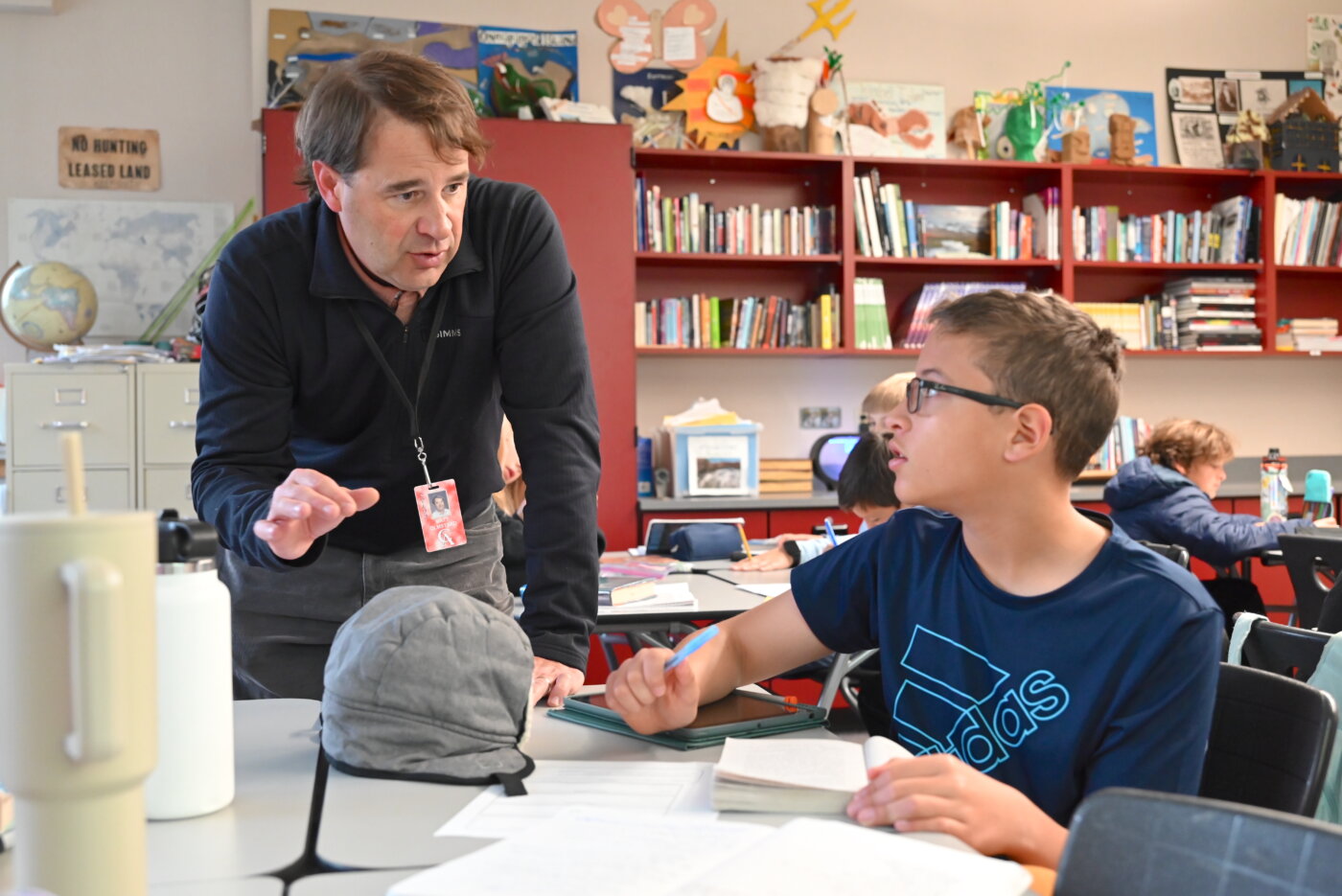
In their first days and weeks in Core, students read Esperanza Rising, the award-winning novel by Pam Muñoz Ryan that tells the story of a Mexican girl and her mother who are forced to flee their country and settle in a California farm camp during the 1930s. Together, the Sixth Graders witness Esperanza confronting racism and poverty and struggling to find a way to lift her family above the social and economic pressures squeezing them from all sides.
The novel’s potent juxtaposition of world events—the Great Depression, the rise in Mexican immigration to the United States throughout the 20th century—alongside one family’s unique experiences offers a thought-provoking landscape that invites close reading and sparks lengthy class discussions, writing experiments, geographical and historical research, and personal reflection.
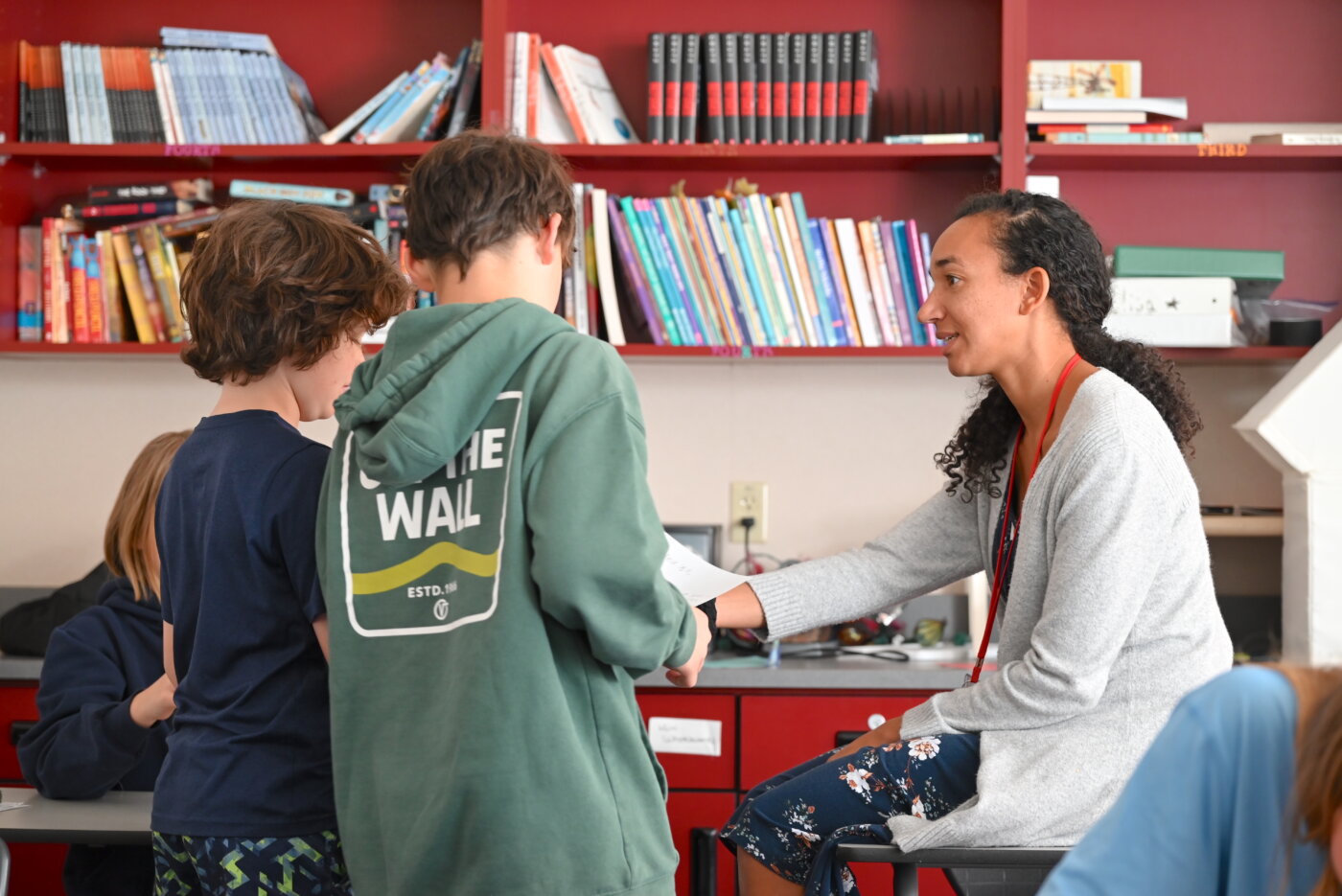
Students follow a similar approach in learning about other world regions and time periods. To understand the history and politics of World War II, they read the novel Stones in Water, by Donna Jo Napoli. This story of two Italian boys, one of whom is Jewish, who are sent to a work camp gently leads readers through a gradual unfolding of the war’s events and atrocities.
In The Place of Lions, by Eric Campbell, Sixth Graders follow a British boy and his father as they attempt to escape animal poachers in Tanzania’s Serengeti, where racial conflict, colonialism, and environmental exploitation all come into play.
And when students read Chu Ju’s House, by Gloria Whelan, the tale of a Chinese girl who struggles to survive after running away from home leads to further exploration of gender issues, China’s political structure, and its rising economic power since World War II.
Estacio explains, “Our students are entering a new world—Middle School—and the characters in these books are, too.” Through them, Sixth Graders experience history and gain a more global outlook by way of stories that mirror the awakening of their own skills and sensibilities.
Learning for life
There is so much that happens in Core, however, that isn’t on the syllabus. Early in the school year, Sixth Grade teachers spend days prepping their students for their first official social: Will there be dancing? Slow songs? Do girls have to wear gowns? (The answer: No.)
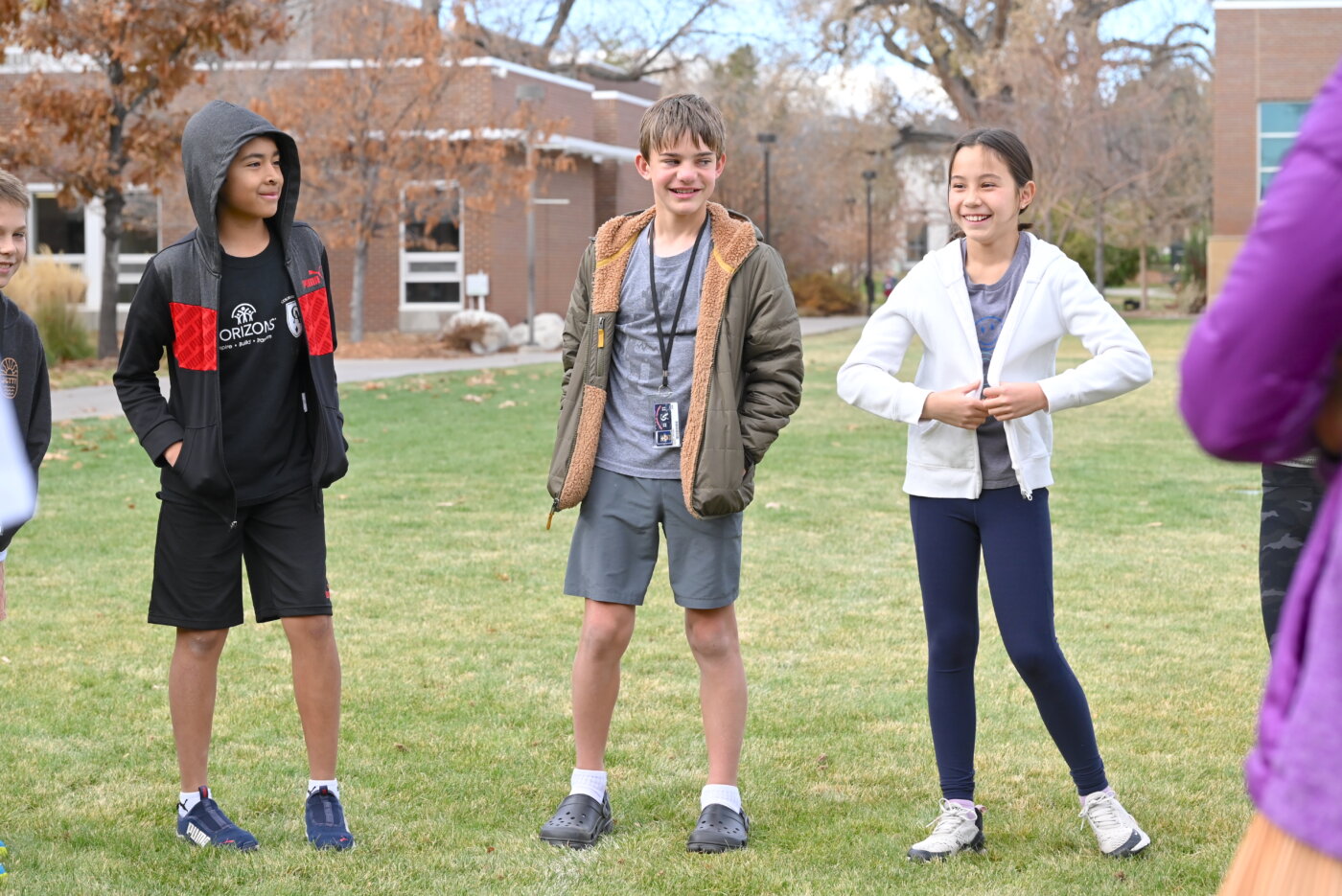
“There can be a lot of anxiety,” says Olmstead, “and we really make an effort to meet our kids where they are—whether that’s being insecure about a social event or asking tough questions about something on the news.”
“We know our kids so well,” Olmstead continues, “that we can start to see and work on those areas of growth for Sixth Graders.”
These include all the essentials of being a good student: study skills, time management , the ability to look ahead several days for looming deadlines, and even organizing lockers.
“They appreciate the independence they receive at this age,” notes Estacio, “and they’re excited when they start to understand that with freedom comes responsibility.”
Writing, too, is an area of special focus. As Olmstead explains, nurturing writing skills is a defining feature of CA’s Middle School; but educating confident writers takes time. “Core gives us multiple class periods each day to work on getting it right. And the hours we spend on writing will pay off for the rest of their lives.”
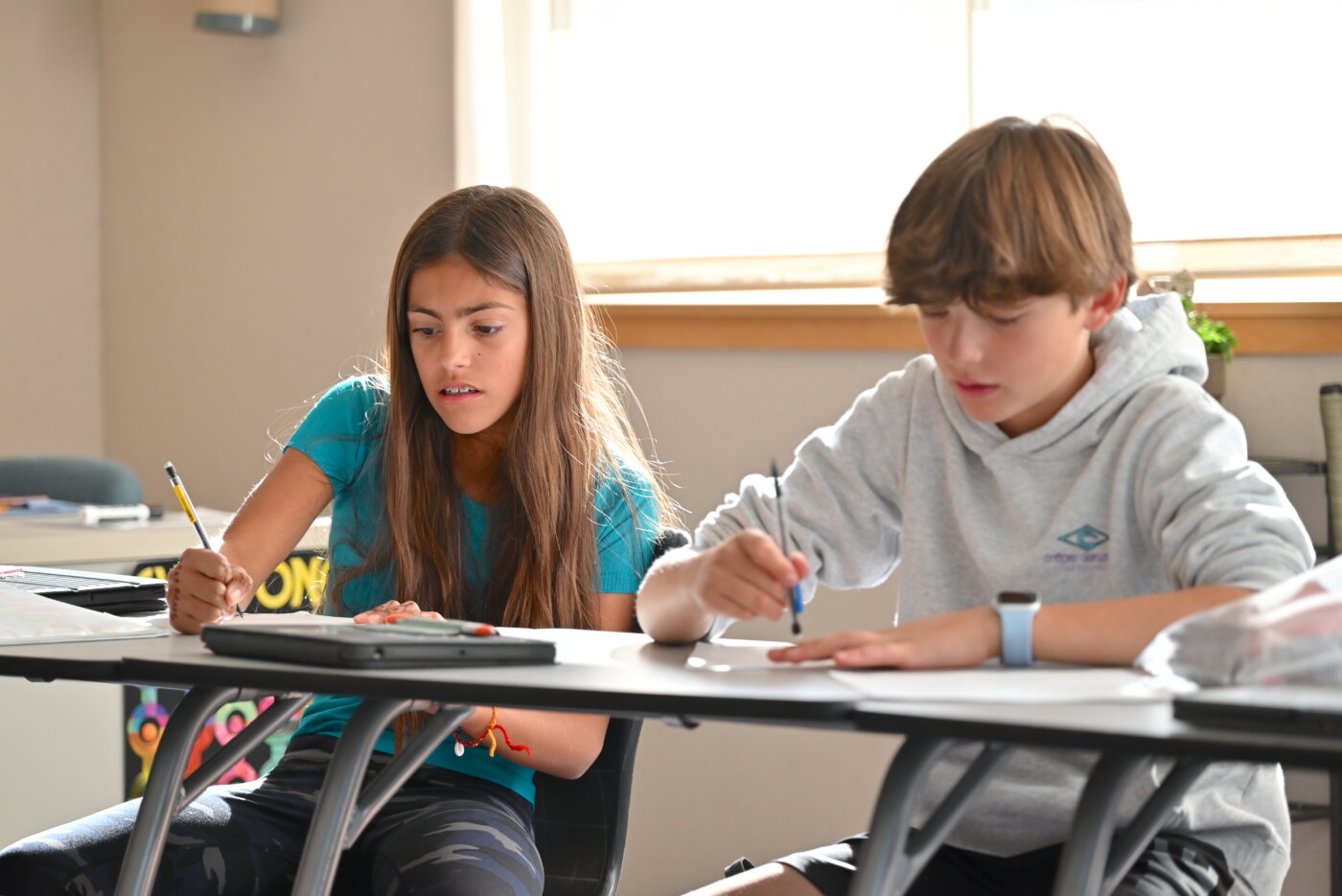
Another big push in Sixth Grade is toward self-advocacy, a critical skill that can make a huge difference in high school and beyond. “At the start of the year,” Olmstead observes, “we’ll often get a note from a parent about their child being absent. What we’re looking for is a student learning how to own their attendance at school, talk to their teachers, and figure things out for themselves. There can be growth in hardship.”
Even more central for Core teachers: ensuring students leave Sixth Grade with the ability and the inclination to be curious, ask questions, and pursue knowledge—and the independence to do so on their own.
“The question we’re continually asking our students,” says Estacio, “is, now that you’re at this new level of sophistication, with all these new skills at your disposal, what are you going to do with them?”
